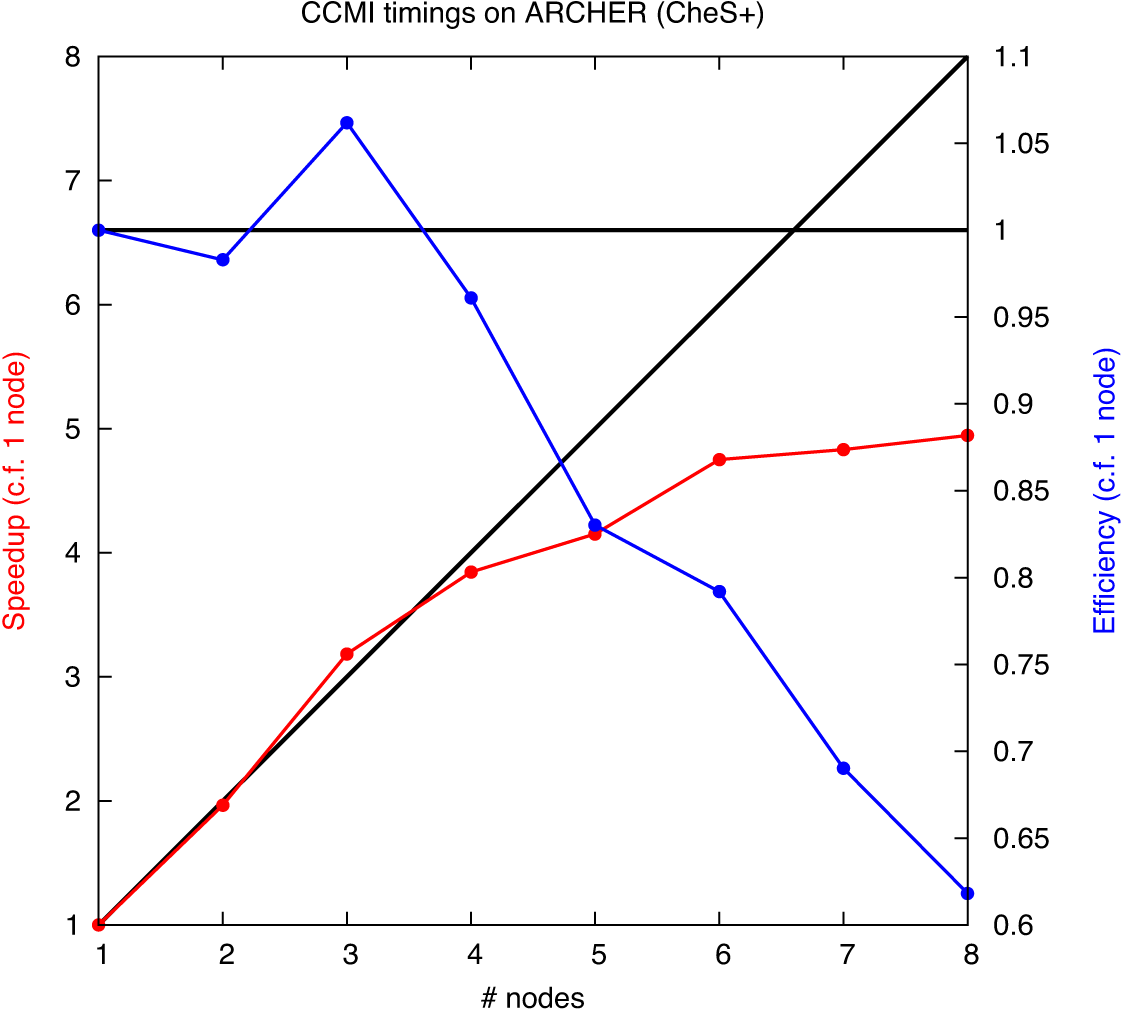Difference between pages "GLOMAP-mode in UKCA linked to Stratospheric Chemistry (StratChem)" and "ARCHER porting"
From UKCA
(Difference between pages)
(Created page with "This configuration involves an extension to the UKCA Stratospheric Chemistry (StratChem) scheme to additionally include stratospheric aerosol-precursor chemistry. In addition to…") |
|||
| Line 1: | Line 1: | ||
| + | Several of the [[UKCA Release Jobs]] have been ported from HECToR to ARCHER, and their [[UKCA_Release_Jobs#Job_List|jobids]] are detailed on that page. |
||
| − | This configuration involves an extension to the UKCA Stratospheric Chemistry |
||
| − | (StratChem) scheme to additionally include stratospheric aerosol-precursor chemistry. |
||
| + | ==Timings== |
||
| − | In addition to the 36 advected tracers in StratChem, 8 extra gas phase tracers |
||
| − | are added for the aerosol chemistry (DMS, SO2, SO3, H2SO4, MSA, CS2, COS, H2S). |
||
| − | The sulphur chemistry scheme is essentially that from Weisenstein et al (1997) |
||
| − | including updates from WMO (2006). |
||
| + | [[File:CCMI_timings_ARCHER.png|300px|thumb|right|Scaling and efficiency profiling for N48L60 UKCa CheS+ on ARCHER]] |
||
| − | In this configuration, H2SO4 in the aerosol phase has a non-zero vapour |
||
| − | pressure in the stratosphere, calculated following Ayers et al (1980). |
||
| − | The GLOMAP-mode aerosol routines have been modified to calculate this |
||
| − | vapour pressure and allow evaporation or condensation of |
||
| − | sulphuric acid depending on |
||
| − | the atmospheric conditions, with the Kelvin effect included according |
||
| − | to the mean radius calculated by GLOMAP-mode. |
||
| − | The nucleation mechanism of Vehkamakki et al (2002) which is applicable |
||
| − | to both tropospheric and stratospheric conditions has also been added. |
||
| + | The plot shows how UKCA scales when ported to ARCHER. The most efficient number of nodes to use is 3 (8x9), although the model will run fastest on 6 nodes (e.g. 16x9 or 12x12). Moving to 3 nodes from 6 will increase the run-time by 50%. |
||
| − | As for the StratChem chemistry, this extended scheme (StratChem+Aero) uses the |
||
| − | sparse-matrix Newton-Raphson solver. |
||
| + | ==Code Changes== |
||
| − | Ayers, G. P., Gillett, R. W. and Gras, J. L. et al (1980) |
||
| − | On the vapor pressure of sulfuric acid, |
||
| − | Geophys. Res. Lett., vol. 7, no. 6, pp. 433-436, 1980. |
||
| + | ===Cray cce Fortran Compiler=== |
||
| − | WMO (2006): SPARC Assessment of Stratospheric Aerosol Properties, |
||
| − | Ed. L. Thomason and T. Peter. |
||
| + | Corrections required for the Cray cce compiler on archer can be found on the [[Bugfixes#Cray_compiler_on_ARCHER|bugfixes page]]. |
||
| − | Vehkamakki, H., Kulmala, M., Napari, I. et al (2002): |
||
| − | An improved parameterization for sulfuric acid - water nucleation |
||
| − | rates for tropospheric and stratospheric conditions, J. Geophys. Res., |
||
| − | vol 107, D22, doi:10.1029/2002JD002184, 2002. |
||
| − | |||
| − | Weisenstein, D. K., Yue, G. K., Ko, M. K. W. et al.: A two-dimension model |
||
| − | of sulfur species and aerosol, J. Geophys. Res., vol. 102, D11, pp. 13,019-13,035. |
||
Revision as of 17:12, 14 January 2014
Several of the UKCA Release Jobs have been ported from HECToR to ARCHER, and their jobids are detailed on that page.
Timings
The plot shows how UKCA scales when ported to ARCHER. The most efficient number of nodes to use is 3 (8x9), although the model will run fastest on 6 nodes (e.g. 16x9 or 12x12). Moving to 3 nodes from 6 will increase the run-time by 50%.
Code Changes
Cray cce Fortran Compiler
Corrections required for the Cray cce compiler on archer can be found on the bugfixes page.
